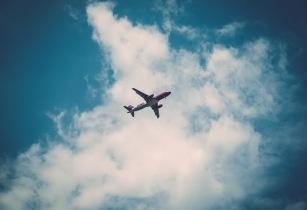An analysis of seat capacity for travel to the top ten international airports in Africa, produced by ForwardKeys, reveals that Lagos is seeing substantial declines in both domestic and international capacity, mainly because Arik Air is cutting 53 per cent of its seats for the rest of 2017
During the coming five months, August – December 2017, there will be 16 per cent fewer airline seats on domestic routes and 9 per cent fewer and on international routes to and from Lagos.
Commenting on this data, Jon Howell, Managing Director of AviaDev, Africa’s leading airline route development conference, said: “One of the major reasons for falling arrivals by air to Nigeria, is the fact that many airlines could not repatriate funds after the currency crisis in 2016. As a result, Iberia and United Airlines have ceased operations to Nigeria, whilst Emirates and the other foreign carriers have scaled back services. The Nigerian airlines have suffered too and so this void has been filled by the ever-opportunistic Ethiopian Airlines, who began serving their fifth Nigerian destination, Kaduna on 1st August 2017 and are now the largest carrier in the Nigerian market.”
Most of the other airports in Africa’s top ten are seeing a healthy growth in capacity, which is more international than it is domestic. However, the most notable exception to this trend is Nairobi, which is seeing a 22 per cent boost in domestic capacity.

The report reveals that in the first seven months of the year, 1st Jan – 31st July 2017, total international flight arrivals grew by 14 per cent over the same period in 2016. Most significantly, growth was stronger for travel to and from the continent than within the continent. Arrivals from Europe, which make up 46 per cent of the market, were up 13.2 per cent. From the Americas, arrivals were up 17.6 per cent; from the Middle East, they were up 14.0 per cent and from Asia Pacific, they were up 18.4 per cent. By comparison, intra-African air travel, which makes up 26 per cent of the market, was up 12.6 per cent.
Looking at Africa’s top ten destination countries, there have been stand-out performances from Tunisia and Egypt, which are recovering from notorious terrorist attacks two years ago, up 33.5 per cent and 24.8 per cent respectively. In addition, Morocco and Tunisia received a huge boost in arrivals from China, up 450 per cent and 250 per cent respectively, after they relaxed visa restrictions. The one disappointment is Nigeria, which has seen a 0.8 per cent drop, in the wake of recession in 2016, caused by a collapse in the oil price to a 13-year low.
Looking forward to the end of the calendar year, bookings for flights to Africa are currently 16.8 per cent ahead of where they were on July 31st, 2016. Bookings from Europe are currently 17.5 per cent ahead, from the Americas 26.6 per cent ahead, from Asia Pacific 11.5 per cent ahead, from the Middle East 8.2 per cent ahead and bookings for intra-African air travel are 11 per cent ahead.





















